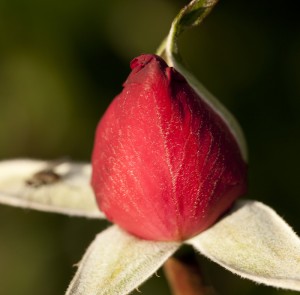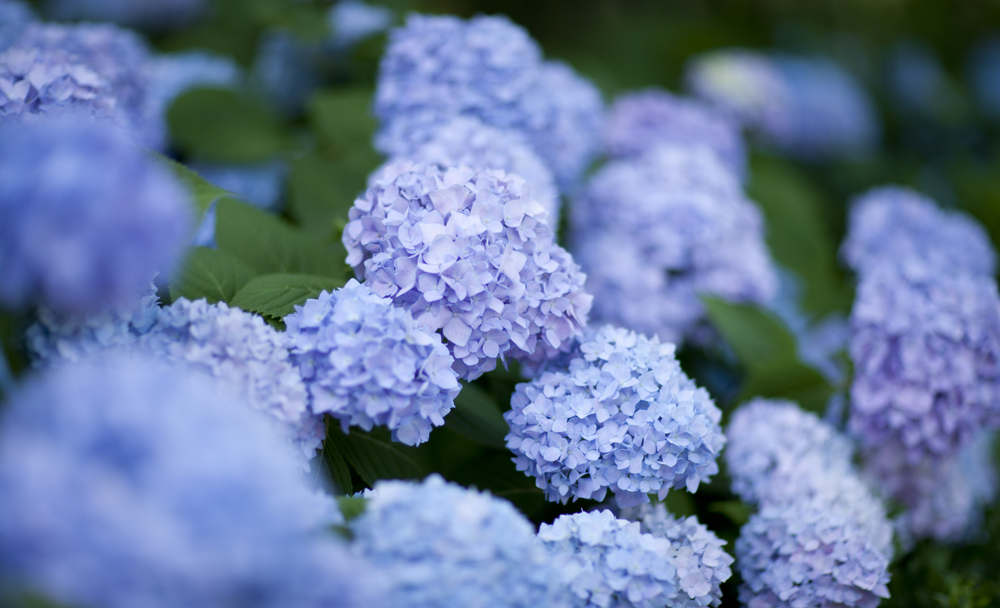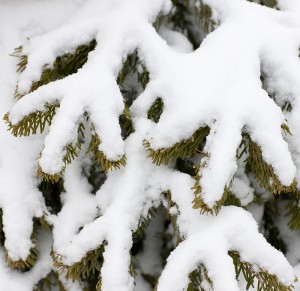Winter Prep: Heading Off the Coming Chill
Posted in Horticulture on December 3 2014, by Sonia Uyterhoeven
Sonia Uyterhoeven is NYBG‘s Gardener for Public Education.
 With Thanksgiving and the season’s first snow behind us, the reality of winter is now upon us. At this time of year the rose garden is closed to the public, but the gardeners are still busy working. Fall clean-up is important!
With Thanksgiving and the season’s first snow behind us, the reality of winter is now upon us. At this time of year the rose garden is closed to the public, but the gardeners are still busy working. Fall clean-up is important!
As every rose gardener knows, the queen of flowers is particularly susceptible to black spot. The spores of the fungus will happily over-winter in the soil around your roses. It is paramount to clean up all the diseased foliage and be meticulous about keeping the area around the rose clean.
Once our roses start to go dormant for the winter and the ground starts to cool, we surround the base of the plants with mulch. The mulch acts like a winter Parka, protecting the base of the rose during the cold winter months. We use a finely shredded bark mulch that doesn’t get matted down into large clumps. “Hilling” or mounding mulch around the base of our roses to a depth of 6 to 8 inches provides ample protection during the cold winter months.
This practice used to be imperative in our Rose Garden, back when we grew many grafted roses. With a grafted rose, if the cold kills the rose back to the graft union, your rose as you know it will be gone the following summer. The root stock—often a vigorous rose named Rosa canina—will be flowering in its stead. We now grow most of our roses on their own root stock and they tend to be hardier. Still, with our unpredictable winters—and as of right now this coming winter is supposed to be difficult—it is better to be safe than sorry and give them winter protection.
Beyond your roses, the rest of your garden may need a little attention as well. Last winter we suffered the consequences of the unpredictable whims of Mother Nature via our hydrangeas. As I mentioned in a blog on these plants that I wrote in August, the dramatic fluctuations in temperature and precipitation that we experienced the last time around wreaked havoc on hydrangea buds that had formed in the previous growing season.

Panicle or peegee hydrangeas (Hydrangea paniculata) flower on new wood, so the severity of the winter has no effect on them. But mophead and lacecap hydrangeas—the bigleaf hydrangea (Hydrangea macrophylla)—flower on old wood, meaning they fall to the perils of the weather.
If you are concerned about your hydrangeas—particularly if they are in an exposed site—then the best way to winterize them is to place 4-6 stakes around the plant and wrap them with burlap. You don’t need to cover the top of the hydrangea; the windbreak created by surrounding the shrub is generally sufficient protection. The burlap can be attached to the stakes with industrial-sized staples, zip ties, string, or nails.
 For arborvitae or evergreens that might be damaged by snow (particularly the columnar or upright forms), stake the tree in question and secure it with nylon straps or tree savers that you can by at a garden center. Alternatively, you can take heavy twine and attach it to the bottom of the trunk, winding it around the tree in a spiral to prevent the branches from being forced down and broken by the weight of the snow.
For arborvitae or evergreens that might be damaged by snow (particularly the columnar or upright forms), stake the tree in question and secure it with nylon straps or tree savers that you can by at a garden center. Alternatively, you can take heavy twine and attach it to the bottom of the trunk, winding it around the tree in a spiral to prevent the branches from being forced down and broken by the weight of the snow.
The first snow in our neck of the woods was light, but if the Farmer’s Almanac is correct, we’re in for a long, white winter. Be careful of salt damage from sidewalks, paths, and driveways, in particular. Salt burns plants and kills their root systems. Use deicing products that contain calcium chloride or magnesium and potassium chloride rather than sodium chloride (salt). These products are less harmful to plants.
When the snowfall is heavy, gently remove it from hedges, shrubs, and trees using a broom or a broom handle and pushing upwards. Avoid using a shovel as it will damage branches. And above all, remember to keep a thorough stock of hot cocoa in the pantry to warm you up once the work is done.


I have several Hydrangeas because they are my favorite flower. We live in Central Valley area of California. The leaves on my plants start turning brown before it gets hot. But I’ve noticed everyone else’s plants are green and pretty mine are brown. The flower blooms big and beautiful but starts to turn brown along with the leaves. What am I doing different than others in my neighborhood?